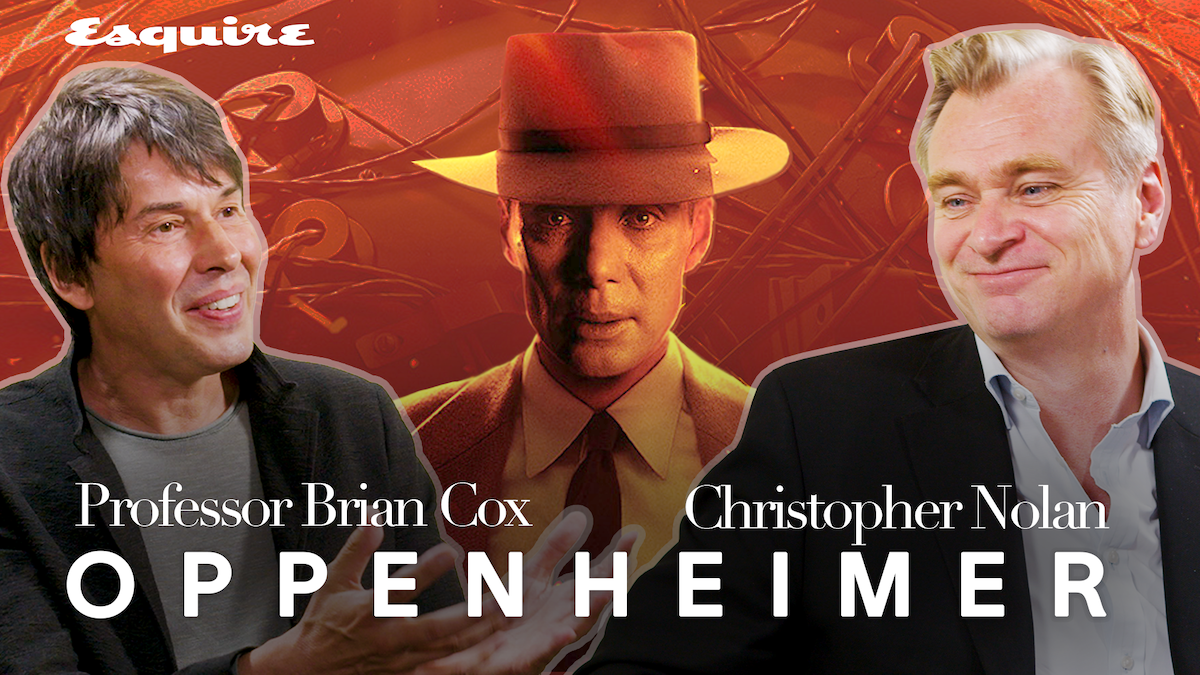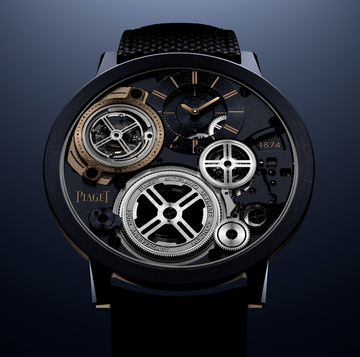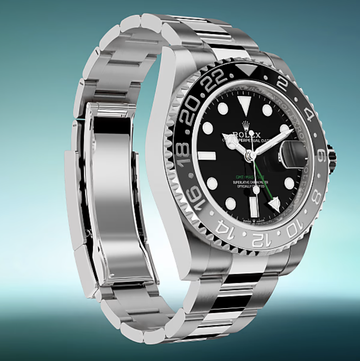Sign up to Esquire's About Time newsletter, style director Johnny Davis’s straight-talking take on the wonderful world of watches.
It was a banner awards season for the watch industry, as a cavalcade of Tanks, Royal Oaks, and Reversos paraded their way down the red carpets. The four-month run from the Gothams to the Oscars is always fruitful for watch spotters, but this year's harvest was especially bountiful. In large part, that's a tribute to how adept stylists and brands have become at tailoring sleeves and training poses to guarantee the perfect wrist shot.
However, much as we enjoyed Rolex ambassador Roger Federer wearing his Rolex Daytona 'Le Mans', and Louis Vuitton ambassador Bradley Cooper wearing his Louis Vuitton Tambour, and TAG Heuer ambassador Ryan Gosling wearing his TAG Heuer Plasma over his Ken glove, there was one runaway winner of awards season. And, like the film that inspired it, it was based on a true story.
While successfully promoting Oppenheimer to its eventual Best Picture Oscar, director Christopher Nolan wore a strange watch that, appositely for the man who made a film about the father of the atomic age, featured a small seconds hand rotating against the yellow-and-black trefoil symbol that warns against ionising radiation.
Much conjecture ensued. Eventually, Benny Safdie – who played Oppenheimer's hawkish Hungarian physicist, Edward Teller – confirmed that he'd gifted Nolan the watch, but beyond that, he was keeping schtum. Was it a bespoke commission? A frankenwatch? Perhaps an old Soviet pocket watch that had been converted into a wristwatch? The answer, according to Reddit's sleuths, is all three, and the story – or, at least, the supposed story behind it – is fascinating.
Apparently, the watch was made by the brand Molnija, which was founded in 1947 and, thanks to contracts with the Soviet military, became one of the USSR's biggest watch manufacturers. It mostly produced pocket watches, many with patriotic themes, from cosmonauts to submarines (I am now obsessed with this one, dedicated to the dogs Belka and Strelka, who in 1960 became the first earth-born creatures to orbit our planet and return alive. Kruschev even gave one of Strelka's puppies to JFK as a gift the following year).
Nolan's watch is a limited-edition model that was created as a gift for the 'liquidators'; the people who sacrificed their health, and often their lives, to clean up after the Chernobyl disaster. The legend on the dial, in Russian, reads: Radiation, Chemical and Biological Safety Troops of USSR.
Now, there's a slight problem with this theory, in that the military unit that cleaned up Chernobyl didn't get that name until 1992, after the dissolution of the USSR. The meltdown occurred in 1986, when they were just known as Chemical Troops. Which means that Nolan's watch is maybe a converted Molnija pocket watch with a new dial, or possibly just a frankenwatch made to resemble something that naïve westerners would imagine the Soviet military were issued.
Without getting our hands on it, we'll never know. But we do know that you can get your own version, in either white or black, for not much more than a hundred bucks.
Even though Nolan's is possibly (probably) a fake, it does look like Molnija might actually have made a commemorative pocket watch for veterans of the Chernobyl disaster. Rather than the, let's be honest, slightly indelicate radiation symbol, it features the same atom-splitting design as the official medal that liquidators were awarded. One sold, alongside the medal, at auction last year. There's also this one, which appears to be a commemorative piece to mark a decade since the disaster, but features the same medal design. Which would make sense, as veterans groups became a powerful lobbying force after the disaster.
Still, we like that Nolan's watch is maybe (definitely) a frankenstein. Mary Shelley wrote her novel as a warning against the unforeseen evil that scientific endeavour can unleash. Though Oppenheimer was light on lightning and maniacal cackling, like Shelley's mad doctor, Nolan's protagonist also becomes death, destroyer of worlds.















